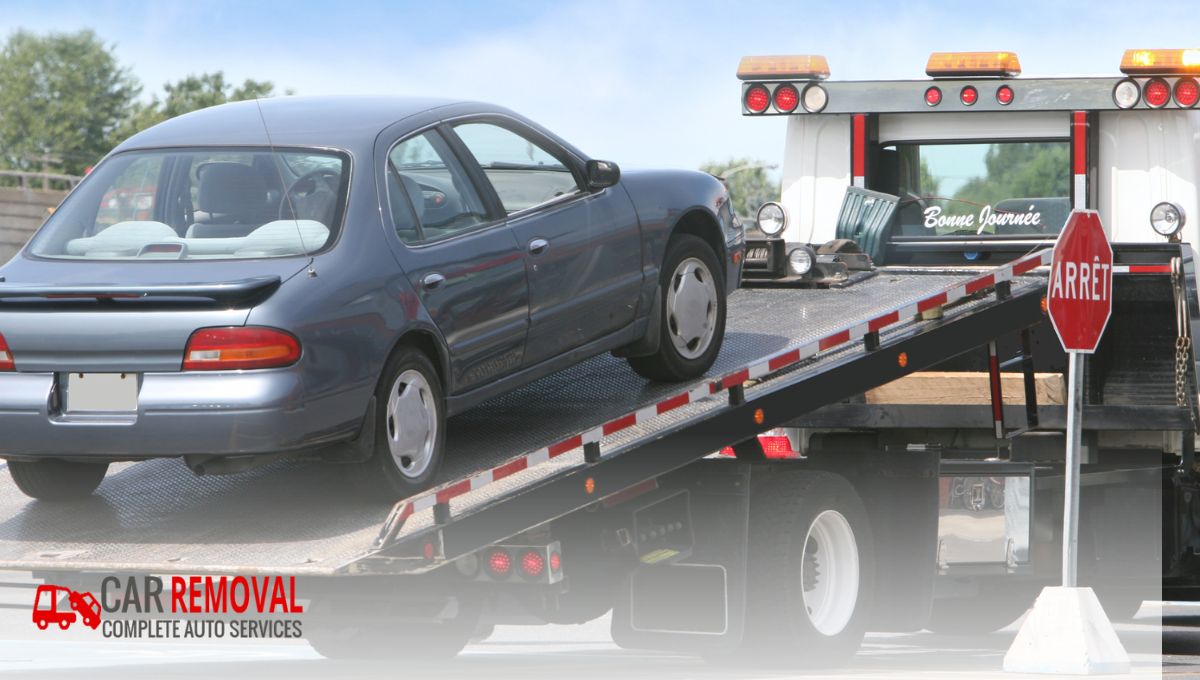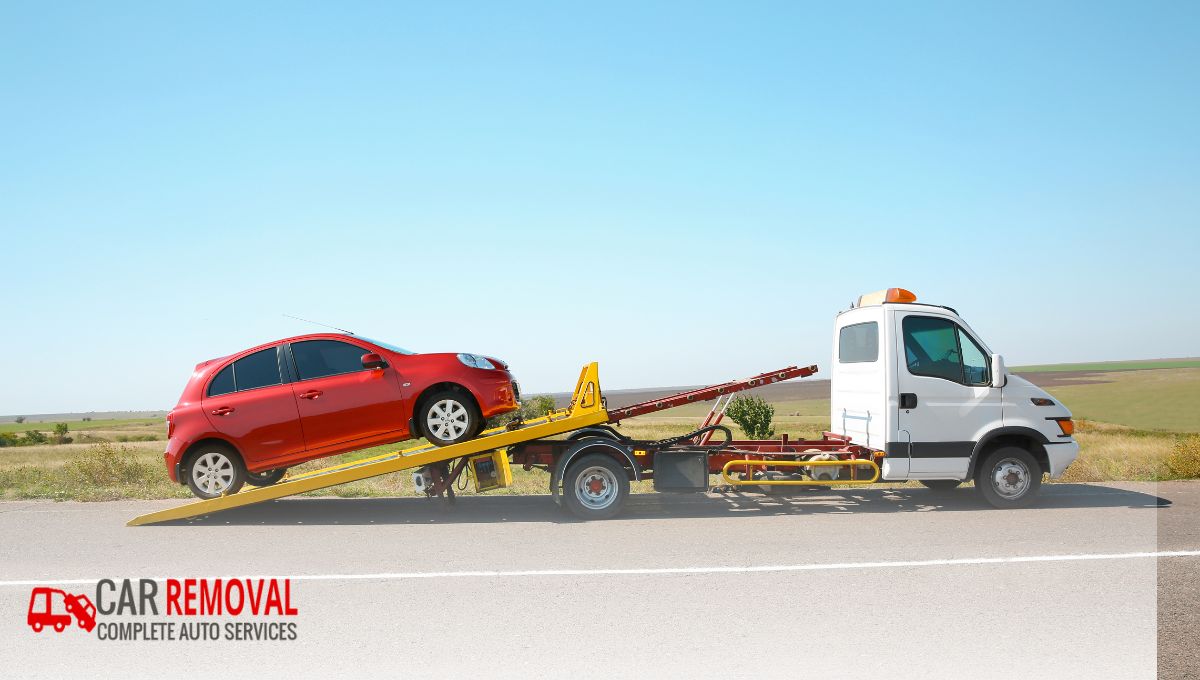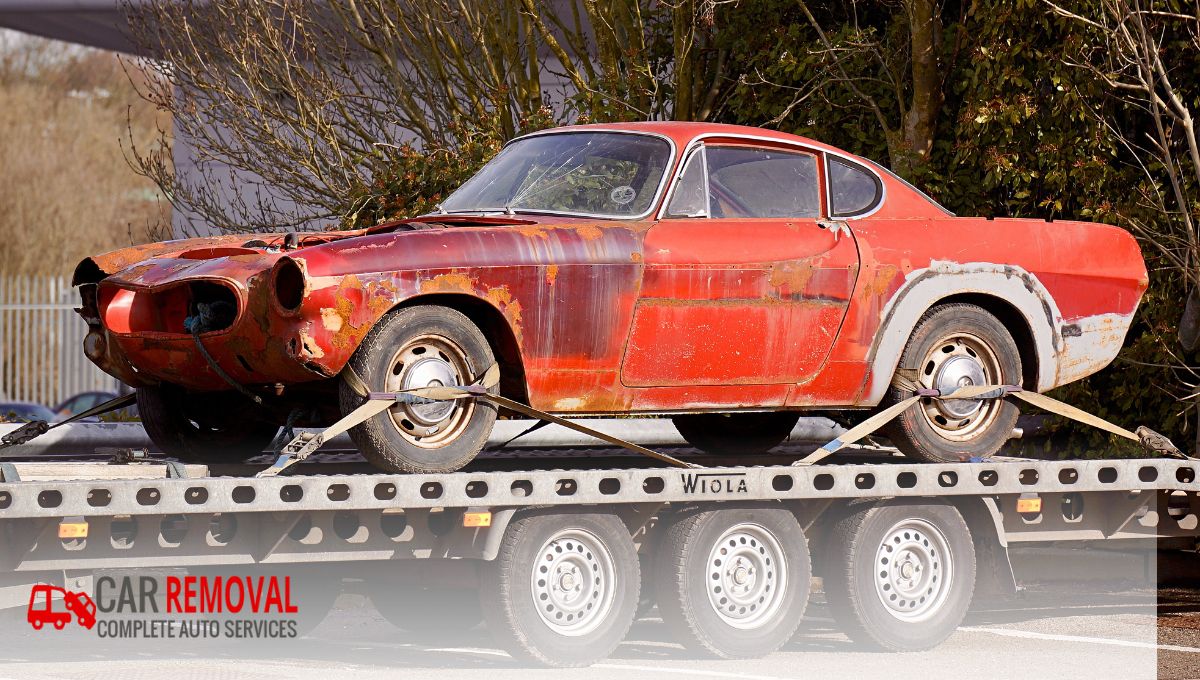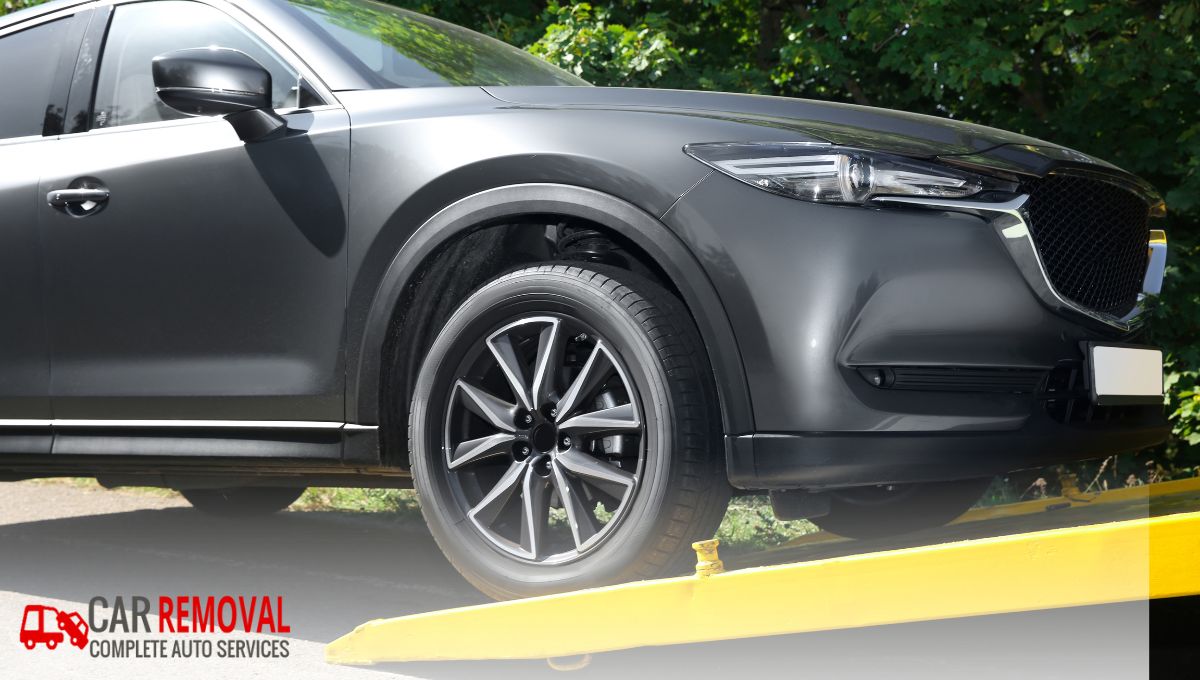
The long weekend is finally on the horizon. The caravan is practically humming with anticipation, the kids are bouncing off the walls, and the open road is calling your name. Whether you're hitching up the van for a trip down to Margs, taking the tinnie out to Cockburn Sound, or loading the trusty ute for a big move, that feeling of hitting the road is pure gold.
But just before you flick that indicator and pull out onto the street, let’s have a proper chat. Let’s talk about the single most important part of your trip: the tow.
Here at Car Removal Perth, we’ve been dealing with vehicles in every state imaginable for over 15 years. We’re the experts you call when a car has reached the end of its life, and in our time, we’ve seen firsthand what happens when a simple towing oversight turns a dream holiday into a roadside disaster. This isn’t just another checklist. This is a deep dive, born from real-world experience, into the critical checks that ensure your journey is safe, smooth, and free of stress. Think of it as a pre-flight check from a seasoned pro who has seen it all.
1. The Physics of a Safe Tow: Mastering Weight and Balance
This is, without a shadow of a doubt, the most crucial part of towing safely, and honestly, it’s where most people get it wrong. It’s not just about what your 4x4 can pull; it's about how it pulls that weight. Get this wrong, and you're fighting a losing battle against the laws of physics.
Decoding Your Vehicle's Labels First, you need to know your numbers. Pop open your driver's side door and look for the placard, or grab the owner's manual. You're looking for a few key terms:
-
Towing Capacity: The maximum weight your vehicle is legally and mechanically allowed to pull.
-
Gross Vehicle Mass (GVM): The maximum your tow vehicle can weigh when fully loaded with passengers, fuel, and all your gear.
-
Gross Combination Mass (GCM): The big one. This is the maximum combined weight of your fully loaded vehicle and your fully loaded trailer. You cannot legally exceed this.
Remember, the "tare weight" of your caravan is its empty weight. Once you add water to the tanks, hook up the gas bottles, and throw in the esky, clothes, and camping gear, the actual "Aggregate Trailer Mass (ATM)" can be hundreds of kilos heavier.

The Golden Rule of Tongue Weight The Tongue Ball Mass (TBM) is the downward force your hitched trailer puts on your vehicle's tow ball. Getting this right is the secret to a stable, sway-free tow. A solid rule of thumb is that your TBM should be about 10% of your trailer's total loaded weight.
-
Too Little TBM (<10%): This is where terror begins. Not enough weight on the tow ball effectively lifts the rear of your car, causing the trailer to wander and then sway violently. This is how you see caravans flipped on their side along the Forrest Highway.
-
Too Much TBM (>15%): This is just as bad. It pushes the rear of your vehicle down, lifting the front wheels. Your steering becomes light and unresponsive, your braking power is severely reduced, and you place immense strain on your vehicle's rear axle and suspension.
The 60/40 Cargo Loading Principle To hit that 10% sweet spot, you need to pack smart. Load approximately 60% of your cargo's weight in the front half of the trailer (ahead of the axles). This means your heavy items—toolboxes, full eskies, cartons of drink—go up the front. Lighter, bulkier gear like bedding, clothes, and camp chairs can go towards the back.
As experts in vehicle assessment, we at Car Removal Perth often see the long-term damage caused by improper loading. Bent chassis, failed suspension, and worn-out transmissions are classic signs of a vehicle that has been pushed beyond its limits. If your old ute or 4x4 is groaning under the pressure before you even leave, it’s telling you something. It might be safer to retire it than to risk a major failure on the road. Give our team a call on 0412-119-053, and we can give you a fair, on-the-spot cash offer.
2. The Unbreakable Bond: Perfecting the Hitch Connection
This is the physical handshake between your car and trailer. It needs to be firm, secure, and have multiple fail-safes. There is no "she'll be right" here.
Step-by-Step Connection Guide:
-
Lower and Seat: Lower the trailer coupler down onto the tow ball. Don't just let it rest on top; make sure it's fully seated. Give the trailer a good jiggle to be sure.
-
Latch and Lock: Close the coupler latch firmly until it clicks into place.
-
THE CRITICAL PIN: Insert the safety pin or coupler lock. This tiny piece of metal is often the only thing stopping the latch from vibrating open on a corrugated country road. Forgetting it is a rookie mistake with devastating consequences.
-
Cross the Chains: Attach your D-shackles and safety chains in an "X" pattern underneath the hitch. This "X" creates a cradle. If the absolute worst happens and the hitch fails, this cradle will catch the trailer tongue, preventing it from digging into the tarmac and causing a catastrophic accident. Ensure the chains have enough slack for sharp turns but are not dragging on the ground.
-
The Breakaway Cable: This is your final line of defence. Attach the breakaway cable from the trailer to a solid point on your vehicle's frame (never to the tow ball or hitch itself). If the trailer completely detaches, this cable pulls a pin that instantly activates the trailer's own brakes, bringing it to a stop.

3. The Foundation of Your Rig: A Deep Dive into Tyres
Your tyres are the only part of your entire rig that touches the road. Trailer tyres are notoriously neglected, often sitting in one spot for months, baking in the harsh Perth sun.
"ST" vs. "P" Tyres Check your trailer's tyres. They should be "ST" (Special Trailer) tyres. They are built with stiffer sidewalls designed to handle heavy vertical loads without flexing as much as the "P" (Passenger) tyres on your car. Using car tyres on a heavy trailer is asking for a blowout.
The Gospel of Correct PSI Check the tyre pressure on all tyres—that includes the tow vehicle and both spares! Look for the correct PSI rating on the trailer's placard or moulded into the tyre's sidewall. Don’t just inflate it to your car’s pressure. Under-inflation causes the tyre to flex and overheat, which is the number one cause of blowouts. Over-inflation reduces traction and creates a jarring, bumpy ride that can damage your trailer and its contents.
Pre-Trip Inspection Do a quick visual check. Look for small cracks in the sidewall, which is a sign of "dry rot" from UV damage. Check the tread depth. Finally, make sure the wheel nuts are tight. They can and do loosen over time.
4. See and Be Seen: Mastering Lights and Brakes
Your lights are your voice on the road. They tell other drivers—from city commuters to the drivers of massive road trains—what you intend to do.
The Electrical Handshake Plug the trailer's wiring harness firmly into your vehicle's socket. Give it a gentle tug to make sure it's secure. It’s a good idea to spray the contacts with a bit of contact cleaner or dielectric grease to prevent corrosion.
The Comprehensive Light Check Get your partner or one of the kids to stand behind the trailer while you check all the lights: running lights, brake lights, left and right indicators, and hazard lights. If you're on your own, you can often see the reflections in a shop window, or simply prop up your phone and record a short video to play back.
Taming the Trailer Brakes If your trailer is fitted with electric brakes, your brake controller is your best friend. Before you hit a major road, find an empty car park or a quiet street. Drive forward at about 20 km/h and manually apply the trailer brakes using the slide or button on your controller. You should feel a distinct and firm pull from the trailer. Adjust the "gain" or power setting until the braking feels strong but doesn't lock up the trailer’s wheels. This simple test is crucial for safe stopping and is your number one tool for controlling trailer sway if it ever begins.

5. Creating a Zone of Awareness: Visibility and Mirrors
If you can't see what's happening down the side of your trailer, you're driving blind. It’s that simple. Standard car mirrors are not good enough, and in WA, you are legally required to have a clear, unobstructed view of the road behind you. This means you need a good set of towing mirrors—either clip-on, strap-on, or full replacement models. The key is to adjust them after the trailer is hitched up to completely eliminate the massive blind spot your trailer creates.
6. The Pilot's Pre-Flight: Your Final Walk-Around Ritual
Before you hop in and turn the key, act like a pilot conducting their pre-flight check. Do one final, systematic walk-around of your entire rig. It’s your last chance to catch a simple mistake that could cause a major problem.
-
Start at the driver's door and walk clockwise.
-
Hitch: Double-check the pin is in, the chains are crossed, the breakaway cable is attached, and the wiring is plugged in.
-
Trailer: Are all doors, windows, and storage compartments securely latched? Is the caravan awning locked in place? Is the TV antenna down?
-
Wheels: Have you removed the wheel chocks? You’d be surprised how often this is forgotten in the excitement of leaving.
-
Cargo: Is that extra esky in the back of the ute tied down securely?
7. The Strategic Drive: Planning Your Route and On-Road Mentality
You're not just a driver anymore; you're the captain of a small convoy. Your driving style and your route plan must adapt.
-
Plan Ahead: Use a GPS with an RV or truck mode to avoid low bridges or notoriously tight suburban streets. Be aware of the long, straight stretches of road in WA where driver fatigue can set in faster.
-
Give Yourself Space: You need significantly more room to stop. Double or even triple your normal following distance from the car in front.
-
Take Turns Wide: Your trailer wheels will cut corners much more sharply than your car. You need to swing out wider than you normally would to avoid clipping curbs, signs, or other vehicles.
-
Be Smooth: Look further down the road, anticipate stops, and be gentle on the brakes and accelerator. Smooth, steady inputs are the key to a stable, comfortable tow.
Conclusion: The Road Ahead is Yours
This might seem like a lot to remember, but after a few trips, this entire checklist becomes a swift, five-minute habit. Those five minutes are the single best investment you can make in your holiday, your equipment, and the safety of your family and everyone else sharing the road.
At Car Removal Perth, our business is built on a foundation of understanding vehicle safety, integrity, and value. If, during your pre-trip checks, you've looked over your old, trusted tow vehicle and realised it’s just not so trusty anymore—if the rust is getting serious, the suspension is sagging, or the engine is making questionable noises—don't risk a breakdown hundreds of kilometres from home.
For a fair, on-the-spot cash for car removal service anywhere in Perth, give the experts a call. With over 15 years of experience, we make the process simple and hassle-free. Contact Car Removal Perth today on 0412-119-053.
Now, you’ve done the prep. You have the knowledge. The road is waiting. Tow safe, and tow with confidence

